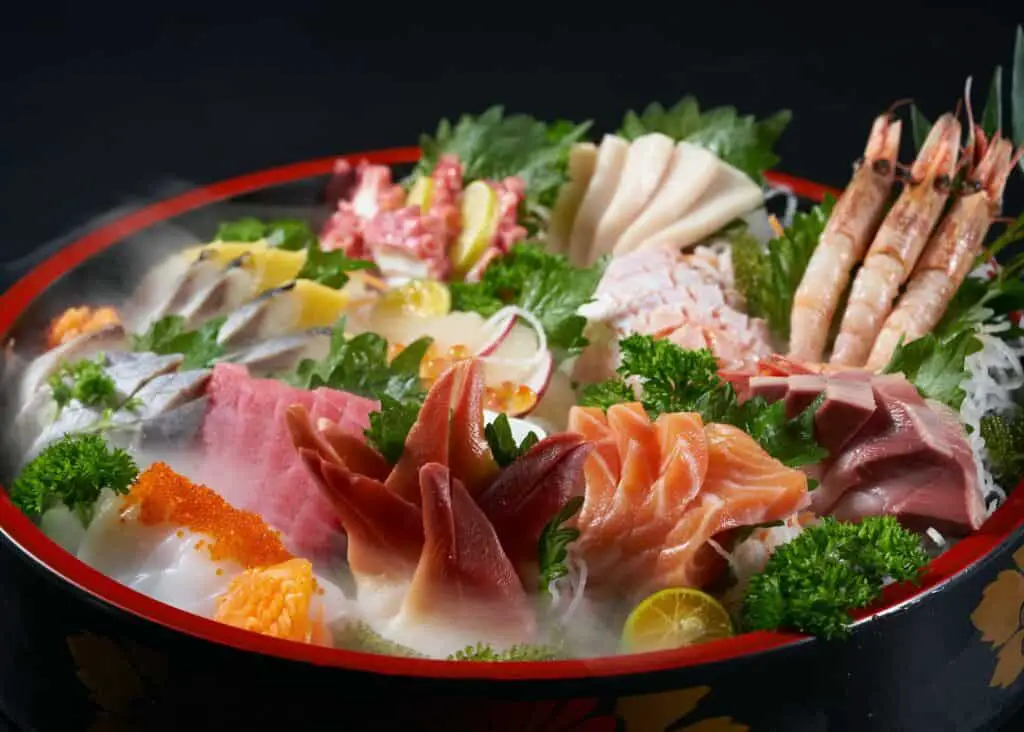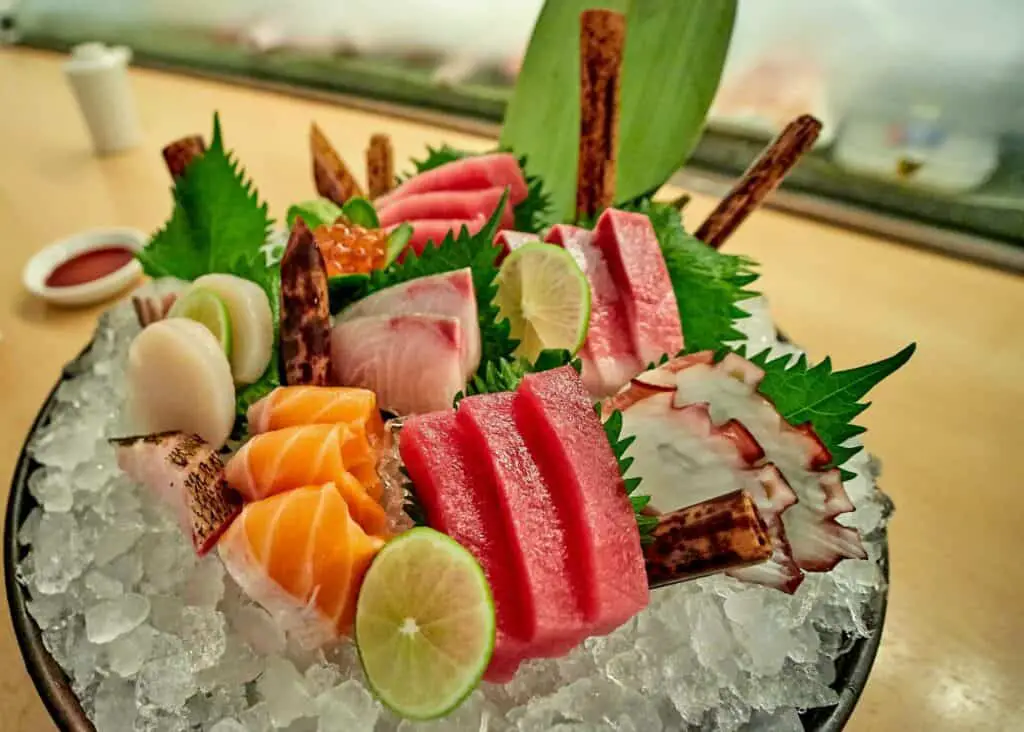If you’ve never been to a Japanese restaurant, you might not be familiar with most of their food. It could be confusing to read the menu, so you ask others to recommend something. So, if you want to read a sushi menu successfully, learn what are sashimi rolls and if they’re a part of the menu.
Sashimi rolls don’t actually exist because this dish only consists of one ingredient – raw seafood. It’s either fish or shellfish, sliced with a sharp knife and often thinly. It’s paired with soy sauce and other dips and eaten as a side dish more than a main.


Learn more about sashimi, its types, and other popular forms of sushi.
What Are Sashimi Rolls? Is There A Sushi Roll Like This?
Sashimi rolls don’t really exist, but a maki roll is a staple in Japanese cuisine. Maki and nigiri were the first recipes made when sushi was created, and they remain a staple food in many restaurants today.
The food known as sashimi came later, and it’s still one of the most popular dishes people order in sushi places. However, it isn’t served in the form of a roll or anything special. It’s simply a slice of raw seafood, whether fish or shellfish, and it can be sliced thinly or thick, depending on the meat type and your dish order.
What Types of Sushi Are Popular? Maki Sushi Roll vs Sashimi vs Nigiri
Looking at all these foods together, it’s understandable there’s a slight confusion between what’s what. To simplify, I’ll explain it like this.
Maki rolls are the most complex of the three, with the most ingredients. They contain the best rice and fillings such as salmon, tuna, shrimp, avocados, cucumbers, daikon radishes, and alike. Sometimes, this type of sushi has dairy. They’re in the form of a roll wrapped with nori seaweed, which is usually the game-changer.
Nigiri is the second simplest dish, and it’s made with a small scoop of rice and a raw seafood or vegetable topping, most commonly salmon and tuna, but sometimes Ebi shrimp and eggs.
Next to nigiri, sashimi looks like something is missing, and it is – rice. This dish is the simplest and uses the least amount of ingredients – it’s just slices of raw fish or shellfish (which answers the question is sashimi tuna).
The appeal of this food is in the seasoning that comes with it and the mandatory freshness of the meat. That’s why, when you see this dish in a restaurant, it’s typically served on ice or cold when it’s brought out.

The Popular Types of This Dish In Restaurant Deals
Here are the most popular types of nigiri that you can order in many Japanese restaurants (you can always look up where to buy sashimi, and its different types, like what hamachi is).
| Name | Type (all raw, except when mentioned otherwise) |
| Ahi | Tuna |
| Ebi | Cooked tiger shrimp |
| Katsuo | Skipjack tuna |
| Hamachi | Yellowtail |
| Ika | Squid |
| Ikura | Salmon roe |
| Kani | Cooked crab meat |
| Maguro | Tuna |
| Sake | Salmon |
| Tako | Cooked octopus |
| Tamago | Cooked sweet egg omelet |
| Unagi | Barbecued freshwater eel |
| Uni | Sea urchin |
Can Raw Slices Be Vegetarian?
Essentially, if you get Tamago, with or without rice, you’ll have a good time because it’s made of egg. However, if you’re the type of vegetarian that doesn’t eat fish or shellfish, then you’d be better off ordering a vegetarian version of maki or nigiri rather than this.
Many new eco-friendly and vegan-friendly companies have been making plant-based sushi, which looks just like the real deal, but it isn’t.
Here are the dishes that will suit someone who doesn’t eat meat products:
- Shiitake mushroom on rice,
- Nasu, or eggplant, on rice,
- Avocado nigiri,
- Tamagoyaki (egg)
- Kappa maki,
- Shinko maki,
- Natto temaki,
- Inarizushi.
You May Not Need a Recipe for This Dish, But You Need the Skill to Make It
Sashimi rolls may not be a thing, but the dish is undoubtedly one for history books. You’ll experience fine dining the Japanese way and learn the secret ingredients in many of these meals. There’s something known as umami, the fifth flavor besides salty, sour, spicy, and sweet – and this one encompasses all of them, giving them a unique twist. That’s what this dish has, and what everyone who enjoys international cuisine should try at least once.